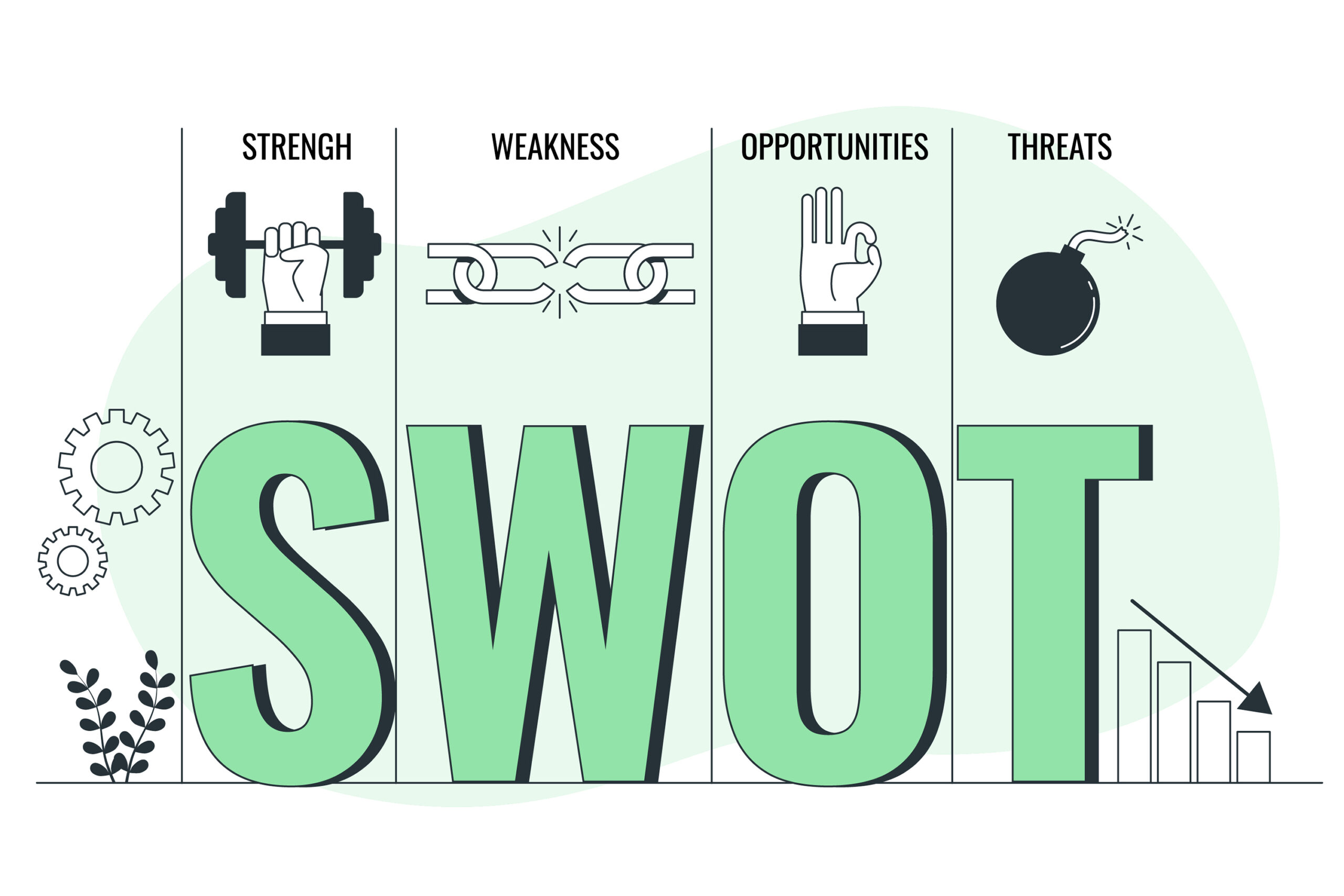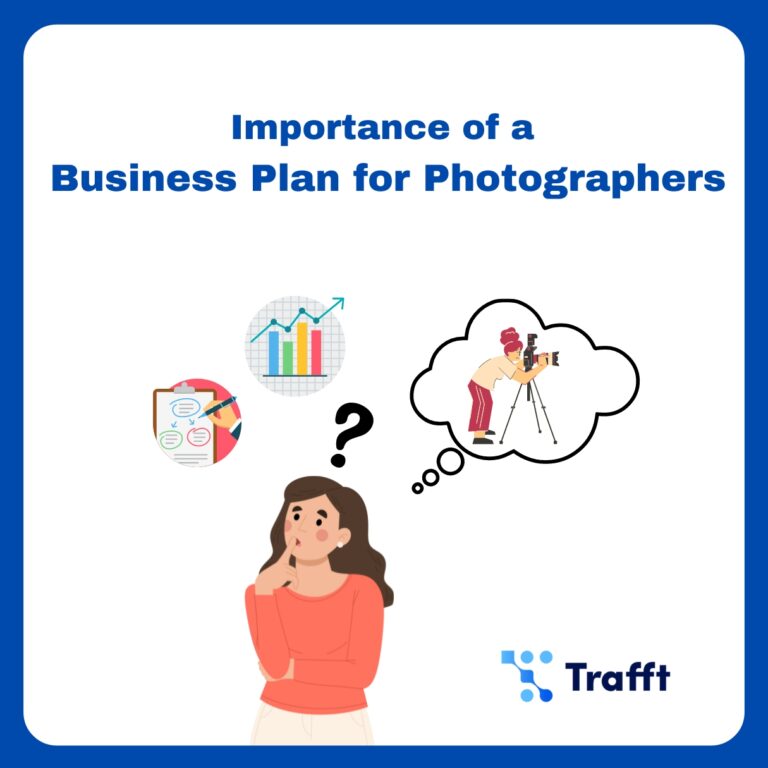Are you a photographer looking to turn your passion into a profitable business? Crafting a solid business plan is the first step to realizing that dream. A business plan for photographers will help you measure your progress, recalibrate your goals, and provide credibility when pitching to potential investors for brand partnerships.
Make sure to leave the idea of creating a business plan manageable—with the proper guidance, you can showcase your photography services and attract the caliber of clients you want.
In this article, we’ll guide you through the purpose and components of a business plan and show you how to tailor it to the unique needs of your photography business. Plus, we’ll provide examples of successful photography business plans to inspire and motivate you.
Understanding a Business Plan
Definition and reasons for a business Plan
A business plan is an essential tool for any organization. It outlines the details critical to your photography business’s success, from its products or services to its financial projections and staffing.
Creating a business plan can seem overwhelming, but ensuring that all aspects of the business have been considered is necessary.
Creating a comprehensive business plan for photographers helps entrepreneurs like you understand what you need to do to make your vision a reality. It enables you to identify potential obstacles and opportunities, set specific goals and objectives for your business, and develop strategies for achieving those goals.
Through this process, entrepreneurs can gain greater clarity about the functions required to successfully run their businesses and build the needed skills and resources.
Ultimately, a well-crafted business plan is a roadmap that guides companies toward achieving their objectives while attracting investors or securing funding to support their growth.
Components of a business plan for photographers
Here are some of the main components that build a business plan:
- The business description provides an overview of the company’s mission statement, goals, and objectives. It defines what products or services will be offered and how they will be created, marketed, promoted, and sold to clients.
- A detailed product or service portfolio is crucial, as it describes various photographic services for things like weddings, events, portraits, and commercial assignments.
- The target market analysis segments identify who your ideal customers are and where they can be found. It also outlines specific characteristics of these markets, such as demographics and psychographics, which helps you tailor your marketing efforts toward
- Lastly, analyzing the competitive landscape assists in identifying who your competition is and their strengths and weaknesses so you can position yourself effectively in the marketplace.
- Marketing is any business’s lifeline, requiring a detailed and strategic approach.
A successful marketing strategy involves more than just throwing out random ads or discounts in the hope of attracting customers. Instead, it requires a thorough understanding of your target audience’s needs and preferences, as well as the best channels to communicate with them.
Using a marketing plan
Every organization should have a comprehensive marketing plan that aligns all their efforts toward achieving their objectives.
When running a photography business, many people often focus solely on the creative aspects of the job. However, it’s important to remember that there are also numerous operational
These include where you conduct your work, what equipment you need, and how you manage expenses. By considering these factors when compiling a business plan, you can ensure that your operations run smoothly and efficiently.
Drafting your financial plans
The same holds true for photography businesses, where it is essential to have an accurate understanding of cash flow. It involves meticulous planning that can take time, but it will result in valuable insights into factors like pricing, investment decisions, and operating costs.
This process will help you track your overall profits while assessing which investments are viable and feasible within your business model.
Using a timeline
A timeline is essential for a photographer, especially if you want to keep your business goals on track. It could be the first step in keeping your business running smoothly.
By completing tasks on your timeline and setting milestones, you can make sure everything gets done on time and according to plan. One of the key benefits of creating a timeline is that it can help you keep track of your finances.
For example, you should track when you expect to make payments on loans or investments. Once you know how much money you need to borrow or put into assets, calculating when that will happen becomes much more manageable.
Examples of photography business plans to inspire you
Photography business plans vary in structure, but they all share a common goal: outlining a clear vision for the business and a strategy for achieving it. Here are some successful photography business plans to inspire you:
Photography studio business plan
The critical element of a photography studio business plan is the business description, which should provide a comprehensive overview of the studio’s activities and services.
Maintaining a detailed checklist can help you communicate your studio photography services to clients and effectively market your business.
You can use this one as an example and/or starting point.
Wedding photography business plan
Social media marketing is a powerful tool for building a successful wedding photography business.
Your business plan should focus on creating a strong brand, producing engaging content, and cultivating client relationships.
Take this wedding photography business plan and start building from it.
Architectural photographer business plan
An architectural photographer’s business plan can showcase prominent clients and highlight a specific niche, unique style, and impressive portfolio.
Portrait photographer business plan
For portrait photographers, a successful business plan should emphasize delivering exceptional customer service, providing a unique client experience, and building a referral-based business.
Try this portrait photography business plan as a starting point.
Why Is a Business Plan Essential for Photographers
Photography is an art form, but for photographers who want to make a living from their craft, it is also a business.
Like any other business, a solid business plan is essential for success.
Here, we will discuss the benefits of having a strong business plan, the challenges faced by photographers who do not have one, and the importance of regularly revisiting and updating it.

Benefits of having a strong business plan
It provides direction. A business plan helps you define your goals, target market, and unique selling proposition. It guides your decision-making process and ensures that your efforts align with your business objectives.
It helps secure funding. A business plan is a must-have if you are seeking funding from investors or financial institutions. It shows that you clearly understand your business, its market potential, and how you plan to make a profit.
It improves marketing efforts. A business plan helps you identify your target market and develop marketing strategies to reach potential clients. By understanding your ideal client’s needs and preferences, you can tailor your messaging and services to meet their expectations better.
It increases profitability. A well-crafted business plan helps you forecast expenses and revenue streams. You can maximize your profitability by identifying potential areas of revenue growth and cost-saving measures.
It establishes credibility. A professional photographer with a solid business plan demonstrates to potential clients that they are serious about their craft and committed to delivering high-quality services. It also helps you stand out from competitors who may not have a clear plan for their business.
Challenges faced by photographers who lack a business plan
Some photographers succeed without a business plan, but they would need even more hard work and dedication.
Creating a business plan can offer guidance and help you reach your objectives.
Photographers who do not have a business plan may find it challenging to achieve their goals and grow their business.
Without a plan, they may struggle to identify their target market, differentiate themselves from competitors, and make informed business decisions.
They may also have difficulty securing funding, which can limit their ability to invest in equipment, marketing, and other essential resources.
Why it is important to periodically update your business plan
A business plan is not a static document. As your business grows and changes, so should your plan.
Regularly revisiting and updating your plan ensures that you stay on track and adjust your strategies to address new opportunities and challenges.
It also helps you identify areas of your business that may need improvement and develop solutions to manage them.
By creating and regularly revisiting a solid business plan, photographers can overcome challenges and achieve their business goals while providing high-quality services to their clients.
To keep your business plan current, it is essential to evaluate progress, measure the effectiveness of strategies, and make necessary changes.
Secrets to Creating a Strong Business Plan for a Photography Business
As a photographer, creating a solid business plan is essential for success.
It helps you establish clear goals, determine the strategies necessary to achieve them and identify potential challenges before they arise.
In this section, we’ll go through the steps you must take when creating a business plan for your photography business.
Creating a business plan for a photography business—required steps!
Step 1: Conduct market research
Research the photography market in your area to understand the competition and opportunities available. During analysis, write down the following:
- Two or three competitors
- What are their services and products?
- Who are their target clients?
- What makes them appealing?
- What are their downsides?
- Price comparison with your business
This analysis will help you to identify areas where you can differentiate yourself and provide a unique value proposition to your customers.
Dive into the photography realm of your community to uncover the type of photographic content people are eager for and how much they’re ready to spend! Explore forums, Facebook Groups, and more for all the information needed.
Step 2: Identify your target market and set goals
Determine who your ideal customer is. What demographics do they belong to? What are their interests and needs? Understanding your target market will help you create effective marketing plans and tailor your services to meet their needs.
Once your target is clear, it is time to set goals. Goals can be divided into long-term goals and short-term goals. Work your way up from short-term goals and check them off as you achieve them. That will help you reach your long-term goals in no time.
Step 3: Define your photography services
Start by defining the services you want to offer. Will you specialize in wedding photography, portrait photography, or product photography? Knowing your niche will help you to target your marketing efforts and stand out in a crowded market.
To start, choose one service that you enjoy and can focus on. You can continually assess your business plan and adjust accordingly.
Step 4: Develop a marketing plan
Once you have identified your target market and unique selling proposition, create a marketing plan outlining how to reach and engage with potential customers. This plan should include tactics like the use of social media, networking, and advertising.
Stakeholders and investors recognize the importance of marketing, and they will assess your business plan based on a comprehensive and proactive marketing strategy. Therefore, it’s crucial to outline your planned marketing strategy clearly.

Step 5: Develop a financial plan
Photographers who want to succeed in their businesses must develop a comprehensive financial plan that includes all aspects of their operations. This includes budgeting, forecasting, and managing cash flow. A solid financial plan will ensure that photographers have the necessary funds to purchase equipment and supplies, hire staff, market their business, and pay taxes.
Having a basic understanding of the financials behind your photography business, such as startup costs, helps you make more effective plans and manage the business more efficiently, reducing any confusion or uncertainty.
Step 6: Create a plan for growth
Once you have established your business, create a growth plan. This could include expanding your service offerings, entering new markets, or developing new products.
A growth plan will help you to stay focused and ensure that your business is constantly evolving to meet the changing needs of your customers.
The benefit of a SWOT analysis

A SWOT analysis is a valuable business planning exercise that examines your business’s strengths, weaknesses, opportunities, and threats. By evaluating these four elements, you can better understand your business’s current state and develop strategies for improving its performance.
When conducting a SWOT analysis, it’s essential to identify the unique strengths that set your business apart from the competition. Additionally, it’s helpful to consider any advantages you have that you can leverage.
On the other hand, weaknesses represent areas for improvement, which could be areas where you need to develop your skills or knowledge. By setting goals to address these weaknesses, you can make progress toward improving your business’s overall performance.
Opportunities are potential areas for growth and development. For example, you can expand your business by using emerging trends or new technologies.
Finally, threats could undermine your business or significantly hinder your success. For instance, if your competitors have well-established studios and years of experience, you’ll need to develop strategies to differentiate your business and attract customers.
Overall, a SWOT analysis is a powerful tool for any business owner looking to improve their business’s performance and stay ahead of the competition.
How to write an effective executive summary
When seeking funding, the executive summary of your business plan is a crucial element to entice potential investors. This concise 50–250 word section should showcase your company’s big-picture goals and outcomes.
To craft an effective executive summary, keep these tips in mind:
- Focus on the most critical information. Provide a clear overview of your photography business, target market, and unique selling proposition. Include financial projections and funding requirements.
- Avoid overwhelming detail. The executive summary should highlight the most critical points without getting bogged down in too much information.
- Highlight your achievements. If you have achieved significant milestones or have considerable experience in the photography industry, be sure to include this information.
- Use persuasive language. Engage the reader with a clear tone that showcases your passion and confidence in your business’s success.
- Support your claims with data and statistics: Use hard data and statistics to support your claims and demonstrate the potential for success.
By following these tips, you can craft an effective executive summary that will leave a lasting impression on potential investors.
Avoid these common mistakes as you create your business plan
Creating a business plan for your photography business is crucial to success, and it takes time, patience, and ongoing revision to get it right.
Your plan can be addressed when rushing to get your funding in place and launch your business. To help you know what to focus on, we have highlighted ten common mistakes you should avoid:
Lack of market research
Without proper market research, your financial projections may be unrealistic, and you may have an incomplete understanding of your target market. Take the time to thoroughly research your market and competitors to ensure that you have a realistic understanding of the landscape.
Being unrealistic
Your business plan must grapple with the reality of the marketplace, financial truths, and the entrepreneurial landscape. It cannot simply represent the best-case scenario or your ideal outcome.
Poor executive summary
The executive summary is one of the most critical sections of your business plan. It should be clear and concise and make the case that your business is viable. Someone without a deep business background should be able to understand it.
Ignoring the competition
Ignoring the competition is a common mistake that can lead to missed opportunities and ineffective marketing strategies. Thoroughly researching and analyzing your competitors can provide valuable insights and help you differentiate your business from others in the market.
Hiding your weaknesses
Every business has weaknesses. However, you can put off potential investors by either hiding them or highlighting them too much. Acknowledging your weaknesses and focusing on your strengths and how you plan to overcome any challenges is essential.
Overcomplicating the plan
Overcomplicating your business plan can make it difficult to understand and follow. This can be a turn-off to potential investors or lenders. Keep your plan concise, focused, and easy to understand.
Being inconsistent
Sections of your plan are often written on different days or by other people and then pasted together into one document, resulting in inconsistency. Review each section of your business plan and ensure that they are consistent in tone, style, and format.
Failing to update the plan
Failing to update your plan can lead to missed opportunities and outdated strategies. Regularly review and update your business plan to ensure it remains relevant and aligned with your goals and objectives.
Lack of clarity
Your business plan should be concise and clearly communicate your vision, mission, and values. Avoid jargon or technical terms that may be unfamiliar to your readers.
Lack of focus
A common mistake is to try to do too much or target too many markets. Focus on your core offerings and target a specific market niche to start. You can always expand your offerings and target new markets as your business grows.
By avoiding these common mistakes, you can create a solid business plan that effectively communicates your vision and goals, helps you secure funding, and launches a successful photography business.
As you create your plan, remember that it’s not set in stone, and your plan should evolve and adapt as your business grows and changes.
Please review and update your plan regularly to ensure it remains relevant and effective. With a strong business plan, you’ll be well on your way to building a successful photography business.
A Photographer’s Friends: Business and Work Automation Tools
Automation is a valuable resource for busy product photographers. Automations are processes that can operate independently, reducing manual work and creating time efficiencies. They can be applied in various contexts, such as image editing and inventory management.
What can it do for you? Automation can help save time and ensure accuracy by reducing the chances of human error since they are executed consistently once established. It will
allow you to step away from mundane tasks—think of the freedom you’ll have to focus on more meaningful activities!
Overview of various automation tools
What is one of the most time-consuming aspects of running a photography business? Managing appointments and client bookings. Fortunately, there are numerous scheduling and booking tools available that can automate this process.
One such tool is Trafft, which allows photographers to schedule appointments, send reminders, and avoid double bookings. With Trafft, photographers can manage their appointments more efficiently and focus more on their craft.
In addition to appointment scheduling, automation tools can help with client management. Trafft does that too.
Marketing automation tools are also an essential component of any photography business. Tools like Sprout Social and Flodesk can help photographers automate their social media and email marketing campaigns, ensuring that they reach their target audience effectively.
Can automation tools improve customer experience and increase revenue?
Automation tools can optimize the customer experience in photography businesses. They may enhance the booking and communication process, bolster operational efficiency, and provide personalization for customers. Below are examples of different automation tools and how they can support this effort.
- Online booking system. An online booking system for your photography business is vital to a strong business plan. It helps streamline booking, scheduling, and paying for services, and it makes it easier for you and your clients. This can increase revenue, as customers will be more likely to book when they have a stress-free and easy booking experience.
- Automated reminders. Clients can receive reminders via email or text message for the date, time, and location of their upcoming appointment with you. With these automated reminders, your clients will always be well-informed and ready for their next session.
- Chatbots for personalized communication. Chatbots and email marketing can be beneficial to personalize communication with your clients. These tools can be set to send specific and personalized messages, taking into consideration your client’s interests, preferences, and previous interactions with your business.
- Management of social media. Many automation tools can help to manage your social media presence or engagement more efficiently. You can schedule posts in advance, monitor engagement, and quickly respond to messages and comments.
- Client followup. You can set each client to receive automated follow-up messages after their session. These messages contain simple appreciation for their business with you and give them additional information that may be helpful for future business.
- Customer feedback. Use automation tools to collect client feedback and help you improve your services and customer experience.
By implementing these automation tools, you can provide a better overall experience for your clients while also improving the efficiency and profitability of your photography business.
Which automation tools for photography businesses are suitable for you?
When it comes to automation tools for photographers, there are numerous options available. Here are some of the most popular tools:
- Trafft is a fantastic automation tool for photographers, streamlining the booking process and freeing up time to focus on your craft. With its intuitive interface, you can easily manage appointments, set availability, and showcase your services. Clients can book sessions effortlessly, while automated reminders reduce no-shows.
- IFTTT. IFTTT, which stands for “If This Then That,” is an automation tool that allows photographers to connect different apps and services to automate tasks. For example, photographers can set up an IFTTT recipe that automatically saves their Instagram photos to a Dropbox folder.
- SproutSocial. Sprout Social is a social media management tool that can help photographers automate their social media campaigns. With Sprout Social, photographers can schedule posts, track their social media analytics, and engage with their followers all in one place.
- Flodesk. Flodesk is an email marketing automation tool that can help photographers create beautiful and effective email campaigns. With customizable templates and automated workflows, Flodesk is an excellent tool for photographers looking to improve their email marketing efforts.
- Photoshop and Lightroom. Adobe’s Photoshop and Lightroom are essential tools for any photographer. They are considered the number one photo editing tools. These tools can help photographers edit photos, manage their photo library, and create beautiful marketing materials. Finding the best photo editing app for PC can significantly enhance your workflow, providing powerful features and flexibility for post-processing your images efficiently.
- Canva. Canva is a graphic design tool that can help photographers create beautiful marketing materials like flyers, social media posts, and email campaigns. With customizable templates and an intuitive interface, Canva is an excellent tool for photographers looking to create professional marketing materials.
The benefit of putting Trafft in your budget for your business’ growth and efficiency
While many automation tools are free, some more advanced tools require a subscription or a one-time payment.
Photographers or entrepreneurs need to make room in their budget for automation tools, as they can significantly improve efficiency and help grow your business. Investing in a tool like Trafft can help photographers streamline their appointment booking process, improve client management, and ultimately increase their revenue.

One of the best choices to automate your business is Trafft, a scheduling and booking software designed to help businesses manage appointments, events, and resources. With the help of Trafft, you can automate all your internal processing, such as scheduling appointments, sending reminders, and collecting payments. Thus, the manual workload is reduced, and you have more time to focus on other essential aspects of your business.
Trafft’s ease of use and customization options make it a versatile and reliable solution for businesses of any industry.
Additionally, Trafft offers advanced security features and detailed reporting capabilities to ensure the safety and success of your business. It’s also accessible on mobile devices, allowing you to manage your business from anywhere.
Trafft: your best automation solution for a seamless booking experience
Trafft is a comprehensive booking and scheduling software that allows businesses to handle complex scheduling needs, such as recurring appointments and resource management. It is highly customizable, and businesses can easily tailor their booking process to their specific needs and branding.
Additionally, Trafft has many tools businesses can use to manage their customer relationships, such as email and SMS notifications, customer feedback, and detailed reporting.
Take a look at some of Trafft’s key features:
Online scheduling
The appointment scheduling system is one of the key features of Trafft. It allows photographers to create customized schedules that clients can view and use to book appointments online. The system also enables businesses to manage their appointments efficiently and effectively.
Client management
This feature gives photographers easy access to client details such as contact information, order history, and payment status. As a result, it enables you to provide personalized services and ensure timely delivery.
Marketing automation
Trafft’s built-in or customizable email templates help photographers reach out to potential clients and keep existing clients engaged, streamlining their marketing efforts.
Online payment
Trafft enables clients to make payments online using credit cards or PayPal, and photographers can track payment status in real time.
Customizable forms
Trafft’s customizable forms streamline the client onboarding process, reducing manual data entry and minimizing errors.
Multiple locations
Trafft’s multiple locations features allow photographers to manage appointments and clients across multiple locations and set up different schedules for each location. Clients can select the location that works best for them.
Resource management
Trafft’s resource management feature enables businesses to effectively manage and allocate resources such as staff, equipment, and facilities.
Reporting and analytics
Trafft’s detailed reporting and analytics help businesses track their performance, identify trends and patterns, and make data-driven decisions.
Integration with other systems
Trafft integrates with other systems, such as Google Calendar and Zoom, helping businesses manage their appointments more efficiently.
Mobile access
Trafft’s mobile access feature allows businesses to manage their appointments and clients on the go, giving them greater flexibility and control.
FAQs about business plans for photographers
What should be included in a photography business plan?
An executive summary, business description, target market analysis, competitive analysis, marketing and sales strategy, pricing structure, services offered, equipment and resources needed, legal structure, financial projections, and an expansion plan should all be included in a photography business plan.
How do I determine the target market for my photography business?
Choose your specialization in photography (weddings, portraits, commercials) and do some market research to learn more about the demographics, tastes, and needs of potential clients in that area.
Marketing and service provision should be geared specifically toward the target demographic.
What are the essential elements of a successful marketing strategy for a photography business?
Having a strong online presence (website, social media), local networking, collaborations with complementary businesses, targeted advertising, and client referrals are all essential parts of a successful marketing plan for a photography firm.
Put your energy into highlighting your company’s USPs, developing its brand identity, and creating memorable experiences for customers.
How can I price my photography services competitively while maintaining profitability?
Researching the going rates in your area and factoring in all of your expenses (equipment, travel, editing, and overhead) will help you set reasonable prices for your photographic services.
It could be profitable to provide a range of pricing tiers to appeal to customers with varying budgets.
What equipment and resources will I need to start and operate my photography business?
Cameras, lenses, lights, tripods, editing software, a computer, backup storage, marketing materials, and maybe even a studio space are all things that might help you get started in the photography company.
Don’t forget about legal and financial necessities like taxes, licensing, and protections for your employees and customers.
How do I create a financial projection for my photography business?
Make a forecast of your finances by calculating your predicted revenue, costs (both fixed and variable), and profit.
Think about a range of potential outcomes and growth rates as you establish sensible financial objectives. In order to keep up with the changing nature of your business, you should revisit and revise your forecasts frequently.
What legal considerations should I be aware of when starting a photography business?
It is important to understand copyright rules that pertain to your work as a photographer, as well as to register your business, receive relevant permissions and licenses, set up a tax structure, prepare contracts for clients and vendors, and secure liability and equipment insurance.
How can I differentiate my photography business from competitors in the market?
Create a name for yourself in the photography industry by establishing your own distinct aesthetic, expanding your service offerings to meet niche needs, prioritizing the satisfaction of your clients, and building a solid brand identification.
Create a portfolio of your finest work to present to potential clients, and make use of positive feedback from satisfied customers to boost your standing in the industry.
What are the potential revenue streams for a photography business?
Photography sessions (weddings, portraits, events), print and digital image sales, photo editing services, workshops, and training courses, and photography-related goods sales (albums, frames, accessories) are all possible ways to generate income for a photography business.
How do I develop a growth strategy for my photography business?
Create a road map to success by deciding where you want to go, what you want to accomplish, how you’ll know when you’ve gotten there, and what you’re going to do to get there.
Think about teaming up with other businesses or finding investors so you can hire more people to handle the expansion.
What are the key performance indicators (KPIs) to track the success of my photography business?
Some key performance indicators (KPIs) for a photography business include revenue growth, profit margin, number of bookings, cost per client acquisition, client retention rate, website and social media engagement, and customer satisfaction ratings.
Keep an eye on these KPIs on a regular basis to make decisions based on hard data and boost your company’s productivity.
Concluding Thoughts on Business Plans for Photographers
Adequate preparation and goal-setting are essential components for success in any business endeavor.
A well-crafted business plan for photographers can be the difference between success and failure. It provides a clear roadmap for achieving your desired objectives and helps you maintain focus, organization, and accountability throughout the journey.
By dedicating the necessary time and effort to create a solid business plan, you can identify potential obstacles, capitalize on rewarding opportunities, and make informed decisions that will ultimately bolster your bottom line.
Armed with a comprehensive photography business plan, you’ll be well-equipped to attract superior clients and remain agile and responsive to shifts in the competitive business.
You’ll be well on your way to enjoying success if you devote even just 30 to 60 minutes of your time each day to this critical task. In fact, by doing this you’ll already be ahead of most photographers who lack a strategic plan for their businesses. Take this vital step toward your success.



